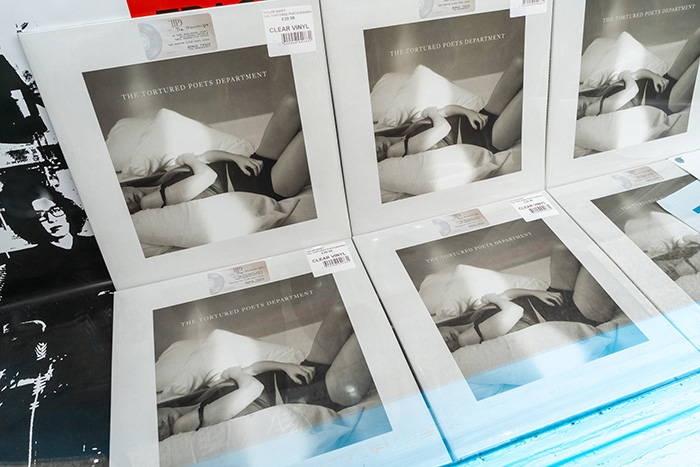Stop letting people enjoy things
Every week, PhilSTAR L!fe explores issues and topics from the perspectives of different age groups, encouraging healthy but meaningful conversations on why they matter. This is Generations by our Gen Z columnist Angel Martinez.
Whenever I see Colleen Hoover’s body of work on display at my local bookstore, a single shiver goes down my spine. Without fail.
The controversial author behind big-time bestseller It Ends With Us (and unsurprisingly, It Starts With Us) is lauded for luring new readers to the written word, in an era where screens take the lion’s share of their attention span. The spike in organic sales is impressive; the number of supporters she has on BookTok, even more so. But I never saw this as a win, given her glamorization of domestic abuse.
I’ve felt the same towards the latest Marvel movies that are milking their audience’s nostalgia, and our current batch of local love teams that are so devoid of chemistry. I hate them. Better yet, I want to critique them; throw all caution to the wind and write thousand-word think pieces on each of them. Unfortunately, I can already predict the hate train that will follow. "Let people enjoy things." "Walang basagan ng trip." "It’s not that deep."

The sentiment is valid, to a certain extent. Pointless hatred is counterproductive if it becomes our sole personality trait. In worst-case scenarios, this escalates into below-the-belt attacks and straight-up bullying that causes us to clock out of the conversation completely. But when this comment is leveled against constructive criticism—an act that requires care, concern, and social consciousness—it’s an exercise in laziness.
Dismissing contradictory opinions only fuels our existing culture of anti-intellectualism, where anything that goes beyond surface-level assessment is labeled as boring or pretentious. If a literary character’s dress is blue, we no longer care if it’s an inherent symbolism or a reference to the sociopolitical milieu the author was situated. It’s just freakin’ blue.
But media does not exist in a vacuum. It’s molded by the artist, who comes with their own set of worldviews, practices, and biases. Cultural criticism doesn’t only instruct us to avoid what’s out in cinemas this week or to pick up a new release. It is meant to illuminate these conditions that they were created in, and how they influence our own circumstances.
Unfortunately, that will always include what we love. No work is or should be safe. Once art is released, it belongs to everyone. Original interpretations will be picked apart, taken out of context, and sometimes even ignored—and there is nothing we can do to stop it.
As a certified stan, I know how a poor review can feel like a personal attack. Perhaps the best example that comes to mind is the most popular yet most polarizing artist of my generation. Taylor Swift is the rare artist whose music has endured throughout every defining moment of my life. So as soon as I got an inkling of the general public’s lukewarm response to The Tortured Poets Department, my initial reaction was to go on the defensive. What do you mean something that went platinum in my room is a failure? What does that say of my taste? My identity?

Ultimately, others’ opinions do not take away my ability to enjoy her work, like how my opinion shouldn’t take away their right to criticize. Who knows? If I didn’t associate myself so much with her songs, maybe I would have shared the same thoughts.
One thing I’ve realized as a critic myself is how the practice teaches us to carve space for nuance: to see that something can be open to improvement, while still holding a special place in our hearts for sentimental reasons. It’s a valuable skill to have in the real world, where issues are not always black or white. Perhaps, it can even lead to a greater appreciation of perspectives outside our own, or reaffirm our stances as we consume whatever is presented to us.
More importantly, it allows us to demand better art. I’m not advocating for the abolition of “lowbrow” culture forever: God knows there are days when we gravitate exclusively towards guilty pleasures that have no rhyme or reason. (Mine is The Cat in the Hat, in case anyone was wondering.) But we have to encourage each other to explore outside of convention, and emphasize that there is a market for the experimental. The human imagination is too precious a resource to confine to cliches.
In reality, criticism is too inextricably linked to who we are for us to simply shrug it off. Some of us are convinced this only comes in the form of published articles and starred reviews. But walking in front of a painting in a gallery and making a quippy remark along the lines of, “Why is this here? I can do that, too.” is criticism. So is finishing a movie and immediately rushing to YouTube to dive into the video essay rabbit hole to affirm what we’re already thinking. Heck, I’d say the same about something as simple as taking a side.
We’re probably so averse to it because of this unfounded idea that our views should remain unchanged. Admission of ignorance feels like we’re conceding in a battle, like we’re taping a sign that reads “I am stupid” to our foreheads. What hubris! Maybe it helps to reframe the human experience as a process of learning, unlearning, and relearning instead.
But we don’t have to change our minds each time we’re presented with new information. It just helps to be open to the possibility. Imagine: We will always be watching movies and reading books and looking at the inner lives of celebrities. At the very least, we’ll be forming opinions based on what we hear from others. These will influence who we are and what we make of the world, and will extend to the generations we will raise. So if we look at it that way, maybe it really is that deep, after all.
Generations by Angel Martinez appears weekly at PhilSTAR L!fe.


